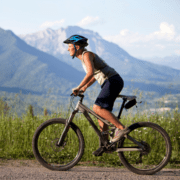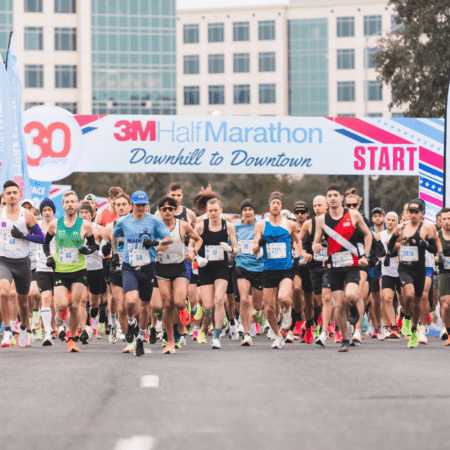Beyond Running: How to Stay Active and Crush Your Marathon Goals
Preparing for the Austin Marathon is an exciting journey, and staying active is key to crossing that finish line with a smile. While running is the main dish, think of these other activities as the perfect sides that’ll keep you strong, balanced, and ready for race day. Let’s explore different ways to stay active while you prepare for the big event!
1. Cross-Training
Cross-training is like giving your running muscles a well-deserved break while still working on your fitness. Cycling, swimming, or even rowing can boost your cardiovascular endurance without the repetitive impact of running. Plus, Austin’s gorgeous weather makes it easy to enjoy a bike ride around Lady Bird Lake or a swim at Barton Springs Pool.
2. Strength Training
Building strength is crucial for improving your running performance and preventing injuries. Focus on exercises that target your core, legs, and upper body. Squats, lunges, planks, and push-ups can be done at home or at your local gym. Consider hitting up an outdoor workout space like the ones in Pease Park or Butler Park for a change of scenery.
3. Yoga and Stretching
Running can make your muscles tight, so yoga and regular stretching sessions are a must. Yoga helps improve flexibility, balance, and mental focus—all of which are beneficial on race day. Check out a local studio like Black Swan Yoga, or enjoy some outdoor yoga at Zilker Park. A simple post-run stretching routine can also do wonders to keep you limber.
4. Trail Running
Switching up your running surface by hitting the trails is a great way to stay active while challenging your body in new ways. The uneven terrain of Austin’s trails, like the Barton Creek Greenbelt, engages different muscles than road running and can improve your balance and agility. Plus, the scenic views are a bonus!
5. Group Fitness Classes
Staying motivated can be tough, but group fitness classes offer a fun way to stay active and meet fellow fitness enthusiasts. From HIIT to spin classes, Austin has plenty of options. Joining a class adds variety to your routine, and the camaraderie can help keep your spirits high as race day approaches.
6. Dancing
Who says training can’t be fun? Dancing is a fantastic way to stay active, improve your coordination, and get your heart pumping. Whether it’s a Zumba class or a visit to one of Austin’s dance studios, you’ll be moving your body in a whole new way. And hey, it’s great for mental health too!
7. Swimming
Swimming is a full-body workout that’s easy on the joints, making it a perfect complement to running. It’s a great way to stay cool while staying active, especially during Austin’s hot months. The Deep Eddy Pool offers a historic and relaxing place to get in some laps.
8. Walking or Hiking
On days when you need a break from running, a brisk walk or hike can be a great alternative. It keeps you moving without the intensity of a run. Explore the trails at Mount Bonnell or enjoy a sunset walk around the Butler Hike-and-Bike Trail. Walking can also be a great way to recover on your rest days while still staying active.
9. Plyometrics
Plyometric exercises, like jump squats, box jumps, or burpees, are excellent for building explosive strength and improving your running power. These high-intensity movements can help you develop the speed and agility needed for that final push in the marathon. Just a couple of sessions a week can make a big difference!
10. Rollerblading or Skating
Take a break from running and try rollerblading or skating. It’s a fun way to engage your leg muscles in a different way while still working on balance and coordination. The Walnut Creek Hike and Bike Trail are ideal for this activity.
Why Variety Matters
Incorporating different activities into your training not only keeps things interesting but also helps build a well-rounded fitness level. Variety prevents burnout, reduces the risk of overuse injuries, and makes your marathon journey more enjoyable. Plus, you’ll be more likely to stick with your training plan when you’re having fun!
So, lace up those running shoes, grab your yoga mat, or hop on that bike. Every step, stretch, and movement brings you closer to that unforgettable finish line at the Austin Marathon!
















 Create a Supportive Environment
Create a Supportive Environment



 Step 4: Gradually Increase Your Mileage
Step 4: Gradually Increase Your Mileage




